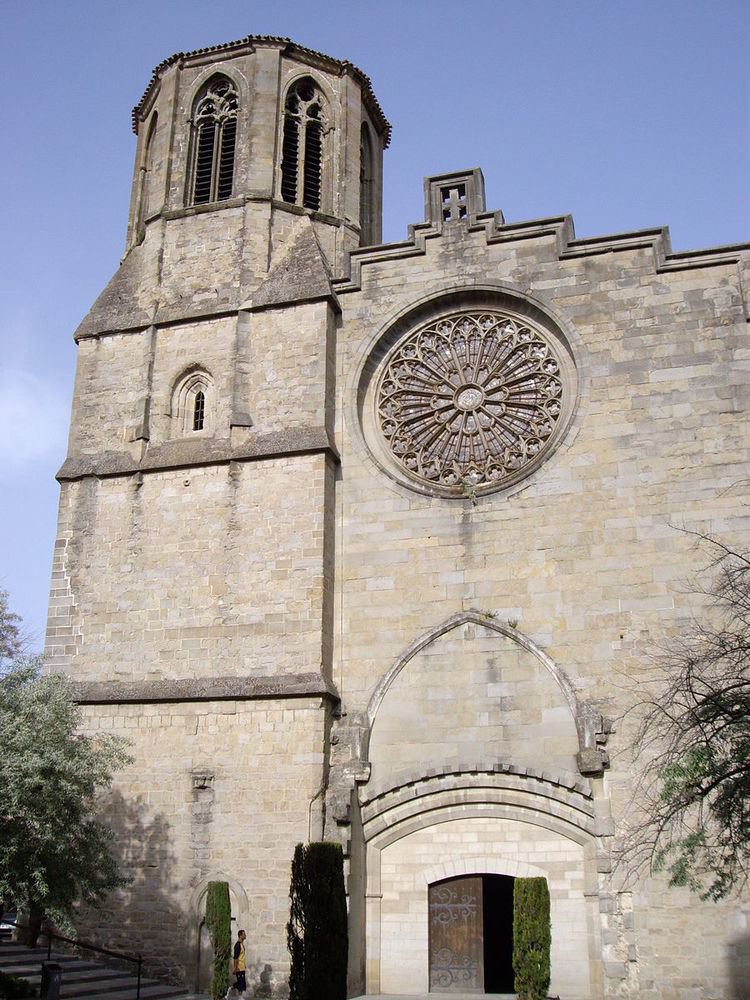Denomination Roman Catholic Area 6,313 km² | Parishes 14 Phone +33 9 60 50 85 43 | |
 | ||
Population- Total- Catholics (as of 2013)353,980255,600 (72.2%) Address 52 Rue Voltaire, 11000 Carcassonne, France | ||
The Roman Catholic Diocese of Carcassonne and Narbonne (Latin: Dioecesis Carcassonensis et Narbonensis; French: Diocèse de Carcassonne et Narbonne) is a diocese of the Latin Rite of the Roman Catholic church in France. The diocese comprises the entire department of Aude. It is suffragan to the Archdiocese of Montpellier.
Contents
On the occasion of the Concordat of 1802, the former Diocese of Carcassonne, nearly all the old Archdiocese of Narbonne, almost the entire Diocese of Saint-Papoul, a part of the ancient Diocese of Alet and ancient Diocese of Mirepoix, and the former Diocese of Perpignan, were united to make the one Diocese of Carcassone. In 1822 the Diocese of Perpignan was re-established. In 2006 the diocese was renamed the Diocese of Carcassonne and Narbonne.
History
Carcassonne was founded by the Visigoths during the Golden Age. The Visigoths sought to compensate themselves for the loss of Lodève and Uzès by having Carcassonne erected into a bishopric. The first of its bishops known to history was Sergius (589). Carcassonne already had an Archdeacon by the seventh century; Archdeacon Donnel subscribed at the 4th Council of Toledo in 633.
The churches of Nôtre-Dame de Canabès and Nôtre-Dame de Limoux, both of which date back to the ninth century, are still frequented by pilgrims. The Cathedral of Saints-Nazaire-et-Celse at Carcassonne was rebuilt toward the end of the eleventh century, the first work upon it being blessed by Pope Urban II, who had come to Carcassonne in 1088 to urge the Viscount Bernard Ato IV de Trincavel to join the Crusade. In 1295 Pope Urban addressed a letter to Bishop Pierre, confirming the institution of Clercs Regular of Saint Augustine in the Chapter of the Cathedral. The Chapter had existed for a considerable time, perhaps going back to Bishop Gimerius in the tenth century, but papal sanction confirmed and strengthened its position as a corporate body living under a Rule. The approvation of Urban II was confirmed by Pope Anastasius IV in 1154. The Chapter included as officers the two Archdeacons, two archpriests, a Sacristan, a Precentor, a Chamberlain, an Eleemosynary, and a master of the works. In 1439, the canons were secularized by Pope Eugenius IV, and the Chapter came to have as officers a Dean, the Archdeacon, a Precentor, and a Sacristan. There were thirty Canons, each with a prebend, and they received a new set of Statutes.
Since the Synod of 2007, the diocese has been reorganized into fourteen 'new parishes'.
The history of the region of Carcassonne is intimately connected with that of the Albigenses. Notre-Dame-de-Prouille Monastery, where St. Dominic established a religious institute for converted Albigensian women in 1206, is still a place of pilgrimage consecrated to the Blessed Virgin. St. Peter of Castelnau, the Cistercian inquisitor martyred by the Albigenses in 1208, St. Camelia, put to death by the same sectarians, and St. John Francis Regis (1597-1640), the Jesuit, born at Fontcouverte in the Diocese of Narbonne, are specially venerated in the Diocese of Carcassonne.
From 1848 to 1855 the see was occupied by Bishop de Bonnechose, who was created a Cardinal by Pope Pius IX on 11 December 1863; on 22 September 1864 he was given the red hat and named Cardinal-Priest of San Clemente. From 1855 to 1873, the See was held by the mystical writer, Bishop de la Bouillerie.
